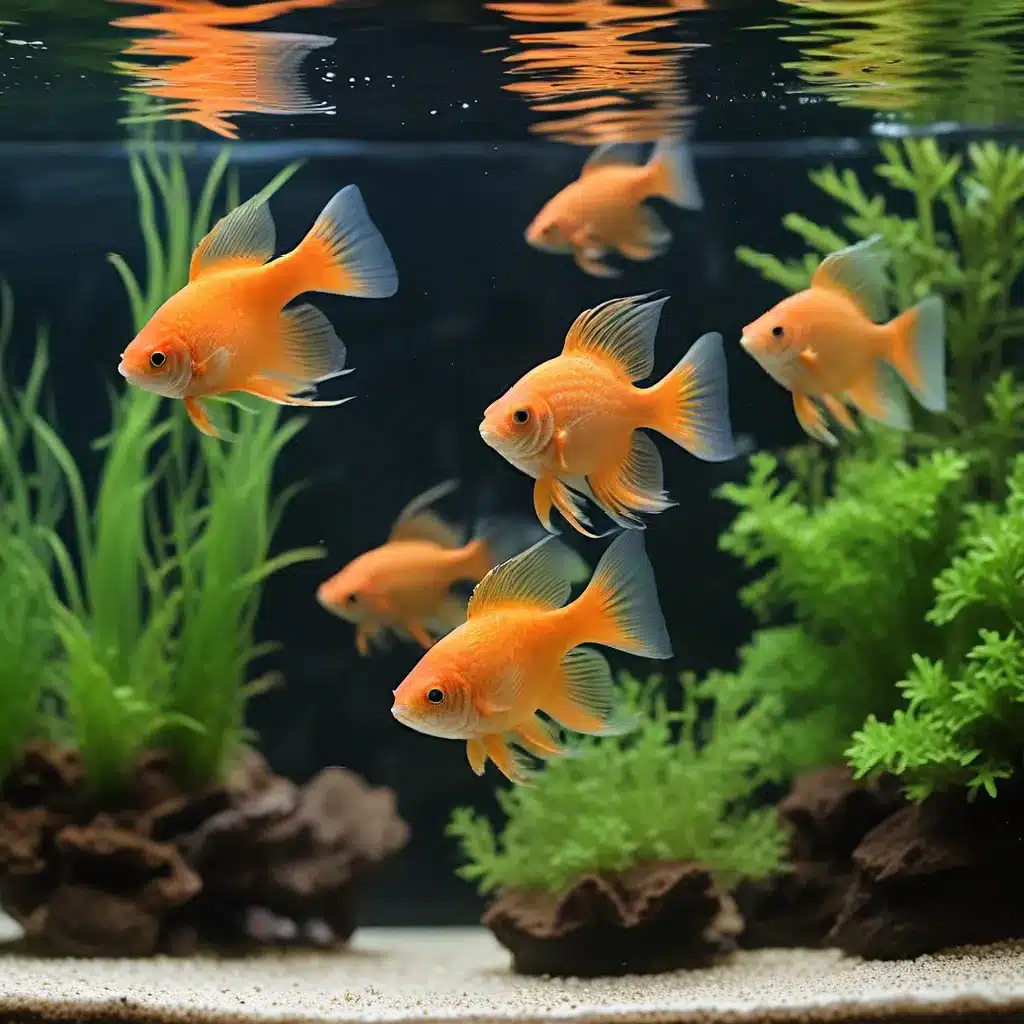
Understanding the Importance of Acclimation
Bringing home a new aquarium fish can be an exciting experience, but it also comes with the responsibility of ensuring a smooth transition for your new inhabitants. Improper acclimation can lead to a host of issues, from stress-induced health problems to untimely deaths. As passionate aquarists, we understand the importance of getting this process right, not only for the well-being of our beloved fish but also for the overall success of our aquarium ecosystems.
In this comprehensive guide, we’ll dive deep into the art of aquarium fish acclimation, exploring the critical steps and techniques that will help you welcome your new finned friends with confidence. By understanding the intricacies of acclimation, you’ll be able to ensure your fish thrive in their new environment, unlocking the true beauty and harmony of a well-maintained aquarium.
Exploring the Challenges of Acclimation
Bringing a new fish into an established aquarium can be a delicate process, fraught with potential pitfalls. The primary challenge lies in the significant differences between the water conditions of the pet store or breeder’s tank and your own aquarium. These disparities in parameters such as temperature, pH, and water chemistry can be overwhelming for the fish, causing stress and potentially leading to illness or even death.
Acclimating new fish can be a complex dance, requiring a careful and methodical approach. Abrupt changes in water conditions can send the fish into shock, compromising their immune system and making them susceptible to disease. On the other hand, a slow and gradual acclimation process can help the fish adapt to their new environment, reducing stress and increasing their chances of thriving in their new home.
The Step-by-Step Acclimation Process
To ensure a smooth transition for your new aquarium inhabitants, it’s essential to follow a well-structured acclimation process. This step-by-step approach will not only help your fish adapt to the new water parameters but also minimize the risk of shock and other health issues.
1. Prepare Your Aquarium
Before introducing your new fish, take the time to ensure your aquarium is ready to welcome them. Ensure that the water parameters, such as temperature, pH, and water chemistry, are within the appropriate ranges for the species you’re adding. It’s also crucial to have a stable and well-cycled biological filter in place, as this will help maintain a healthy and balanced ecosystem.
2. Floating the Bag
When you first receive your new fish, it’s important to allow them to acclimate to the temperature of your aquarium water. Start by floating the sealed bag containing the fish in your aquarium for 15-20 minutes. This gradual temperature adjustment will help prevent sudden thermal shock.
3. Drip Acclimation
After the initial floating period, it’s time to start the drip acclimation process. This technique involves slowly introducing your aquarium water into the bag containing the new fish, allowing them to gradually adjust to the new water conditions. To do this, use an airline tubing and a small valve or airline clamp to create a slow drip, adding a few drops of aquarium water to the bag every minute. This process should continue for 30-60 minutes, or until the water volume in the bag has doubled.
4. Introducing the Fish
Once the drip acclimation process is complete, you can carefully net the fish and transfer them to your aquarium. Avoid pouring the water from the bag into your tank, as this can introduce any uneaten food, waste, or other contaminants that may have accumulated during the shipping or storage process.
5. Monitor and Observe
After introducing the new fish to your aquarium, closely monitor their behavior and appearance for the first few hours and days. Watch for signs of stress, such as hiding, erratic swimming, or loss of appetite. If you notice any concerning behaviors, consult with a veterinarian or experienced aquarist for guidance.
Bonus Tips for Successful Acclimation
In addition to the core acclimation steps, there are a few additional tips and strategies that can further enhance the success of introducing new fish to your aquarium:
-
Water Quality Matching: Before the acclimation process, test the water parameters of both the new fish’s original environment and your aquarium. Aim to match the pH, temperature, and other key water chemistry factors as closely as possible to minimize the stress on the fish.
-
Nutrient-Rich Foods: During the acclimation process, consider offering your new fish a nutrient-rich, high-quality diet. This can help reduce stress and support their overall health and well-being as they adjust to their new surroundings.
-
Stress-Reducing Decor: Providing hiding spots, plants, and other decorative elements in your aquarium can help create a calming environment for your new fish. This can ease their transition and reduce the risk of stress-related issues.
-
Quarantine Considerations: For added peace of mind and disease prevention, consider setting up a dedicated quarantine tank to acclimate new fish before introducing them to your main aquarium. This can help identify and address any potential health concerns before they impact your established ecosystem.
By incorporating these strategies into your acclimation routine, you’ll be well on your way to ensuring a smooth and successful transition for your new aquarium inhabitants.
Conclusion: Reaping the Rewards of Proper Acclimation
Mastering the art of aquarium fish acclimation is a crucial step in maintaining a thriving and vibrant aquarium ecosystem. By taking the time to carefully introduce your new fish to their new environment, you’ll not only safeguard their health and well-being but also contribute to the overall harmony and beauty of your aquarium.
As you embark on your aquarium journey, remember that the King Aquarium team is always here to provide expert guidance and support. Our knowledgeable staff is dedicated to helping you navigate the complexities of aquarium care, from species-specific needs to advanced aquascaping techniques.
With the right approach to acclimation and a commitment to ongoing care and maintenance, you’ll be rewarded with a flourishing aquarium that brings joy, tranquility, and a deep appreciation for the wonders of the underwater world.

